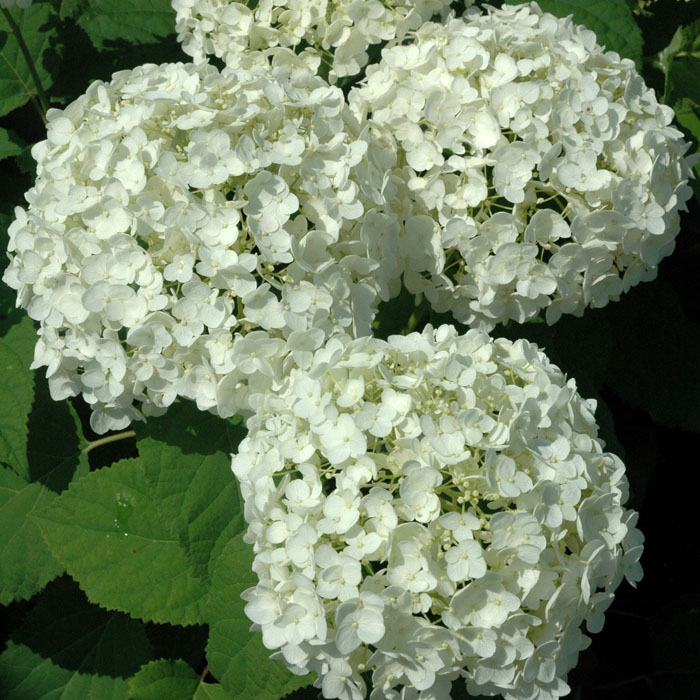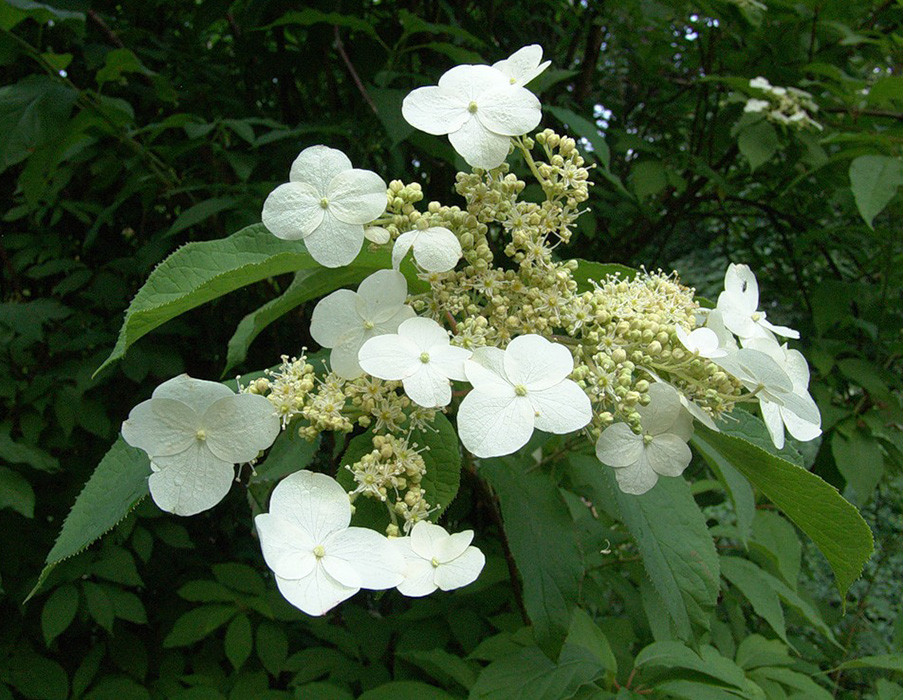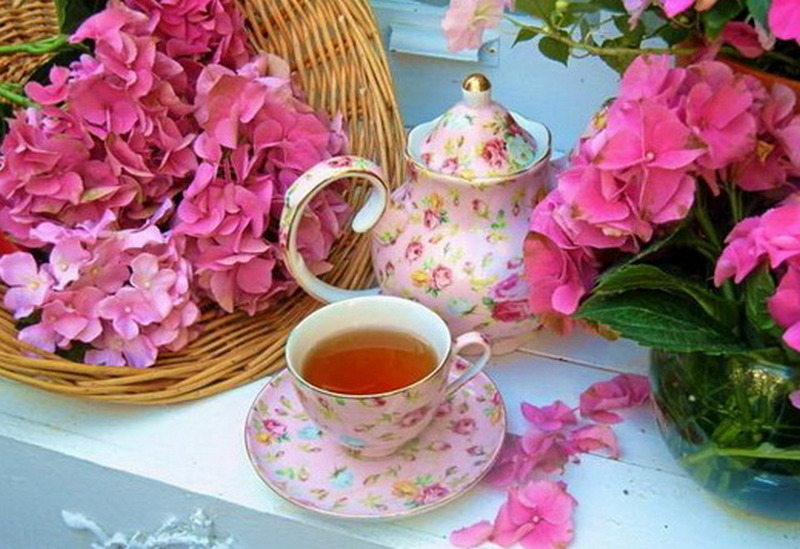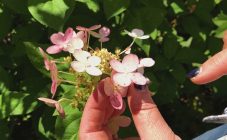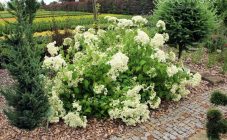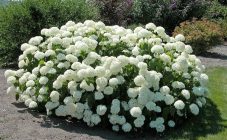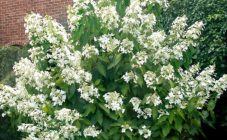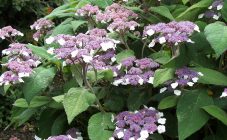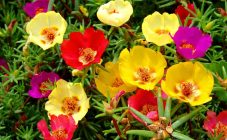Content:
Everyone who sees hydrangea flowers has a feeling of lightness and freshness, and they want to decorate their plot or at least home premises with beautiful bouquets with these fluffy multi-colored hats.
Description of culture
Hortensia is the brightest representative of the Hortensiev family of the same name. The name of the flower is Hydrangea, using Latin botanists translate as "a vessel with water", because this plant loves moisture very much (or because the seed pods of the flower look like a vessel).
The blooming hydrangea bush can be found in the countries of Southeast Asia (where it comes from), North America, as well as everywhere in Russia: be it the Far East or the near Moscow region. This perennial can act as an indoor flower, but only some of its species, it is mainly grown in gardens.
These shrubs have two types of inflorescences:
- fertile - small in size, after a 2-week flowering of which seeds are formed;
- sterile - large, located at the edges, they form the very "balls" that everyone who has seen what a hydrangea flower looks like will remember.
Most hydrangea varieties bloom in white, cream, red, blue, pink or lilac flowers, gathered in balls, scutes or panicles. An uncultivated hydrangea is a shrub or small tree, or even a 30-meter liana. There are plants belonging to this family that do not shed their foliage, but remain evergreen. The hydrangea leaf shape resembles an oval with a pointed tip and jagged edges, the size is more than average, veins are noticeable on the leaf plate.
The period when hydrangea begins to bloom is spring; it fades after autumn frosts.
Hydrangea varieties
The garden flower hydrangea has more than eight dozen varieties and species.
Hydrangea
The tree-like species is very popular among flower growers, it grows mainly in mid-latitudes. It reaches a height of 1-3 meters. The annual stem is crowned with cream or white inflorescences. The most commonly grown varieties are:
- pink Invizible Spirit;
- white sterilis;
- large-flowered variety Annabel.
Hydrangea paniculata
This type of perennial hydrangea grows in the form of a tree or bush with a height of 2-5 meters. Differs in winter hardiness. The inflorescences are located at the ends of the trunks, which are only one year old, and have a paniculate pyramidal appearance, are painted in a pale green color when blooming, then turn white and turn pink. The most popular varieties in this group are:
- Grandiflora;
- Quishu;
- Tardiva.
Large-leaved hydrangea
This large-leaved type of hydrangea can be grown on the site, as well as in the house or on the terrace, by planting in a pot. What a hydrangea looks like is indicated by its name: large foliage, rich green. Inflorescences of an umbrella or hemispherical shape are formed on last year's stems, the stem of an annual has no buds.The flowers are colored blue, lilac or blue. Interesting new varieties are:
- Endless Summer;
- Renata Steinger;
- Expression and Romance (their difference is double flowers).
Hydrangea oakleaf
This genus is characterized by reduced cold survival. It begins to bloom in early summer, while the color is very lush, when blooming is white, and the rest of the time it is purple, the inflorescences are paniculate. The plant has oak-shaped leaves.
Hydrangea groundcover
Winter is not terrible for this type of hydrangea. The trees reach a height of up to 3 meters. Leaves, two tens of centimeters long, have downy down. Inflorescences in the form of scutes, begin to bloom in white, then turn pink.
Also, gardeners love such types as:
- Hortense Bretschneider;
- Stalked hydrangea;
- Ash hydrangea (gray).
Agrotechnics
You can propagate this garden culture in several ways. The seed method is cheap and easy, but time consuming. Seeds are sown in the fall in a prepared substrate and moistened with a spray bottle. Planting is carried out at a temperature of 14-20 degrees. A couple of times it is necessary to pick the seedlings. For hardening, they are taken out into the air (in the shade, but not in the direct sun), in the evening they are returned to the house. For a couple of years, hydrangea is grown in the house, only in the third season it is transplanted into open ground.
When planting seedlings, the piece method is used, that is, each bush, together with a lump of earth, is planted in a prepared hole. The best condition for young hydrangeas is a good level of sun exposure, but some species like to shade. After planting and moistening, the soil around the seedling is compacted and mulched.
To tell everything about the propagation of hydrangeas, one should also mention growing by layering and cuttings.
What kind of soil does hydrangea like? These are fertilized, loosened and moistened loams with an acidic (about 5-6 pH) or slightly acidic 4-4.5 pH reaction.
Culture properties
Hydrangea will look great and smell great on any plot or outdoor terrace, and it can be a whole bush, and so-called. retail - single plant. The most spectacular of all an ordinary hydrangea bush looks next to coniferous or evergreen trees.
However, hydrangea can be used not only as an ornamental plant, but also as a medicinal plant. So, in the tree type of a flower there are substances such as:
- alkaloids;
- flavonoids;
- coumarins;
- essential oils;
- carbohydrates;
- glycosides.
Almost all parts of the plant are used in folk medicine for making tea, decoctions and various tinctures. Funds from hydrangea help with urinary problems, inflammatory processes, helminthic lesions, as well as purulent skin diseases, gout, dyspepsia, tonsillitis and tonsillitis, bile stasis. The use of hydrangea tea can show good results in regulating sugar levels in diabetics, and the extract from the root has a wound healing effect.
With all the positive properties, one should not forget that the answer to the question: hydrangea is poisonous or not, is positive, because it contains cyanogenic substances, the difference between medicine and poison is in the correct dosage.
Diseases and pests
Hydrangea is a very whimsical culture that is prone to many diseases:
- chlorosis - the reason is a lack of iron due to prolonged growth in one place, as a result of which the leaves turn yellow; the problem is eliminated with special iron-containing preparations;
- fungal diseases (gray rot, powdery mildew and others) - develop mainly in rainy seasons, you can distinguish a healthy plant from a patient by the wateriness of the tissues and the presence of holes eaten by the fungus; it is treated by removing the affected parts of the bush and spraying with fungicides;
- peronosporosis of hydrangea is characterized by fat dark spots, and septoria is characterized by brown formations on the leaves, soap solution and infusion of copper sulfate help;
- viral ring spot - foliage wrinkles, the plant dies irrevocably, since there is no cure.
Useful information about the plant
There are several interesting facts about hydrangea, the knowledge of which helps to grow beautiful flowers and take proper care of them:
- the color of the inflorescences depends not so much on the variety as on the acidity of the soil - in strongly acidic they are blue, in neutral they are white, the alkaline environment makes them lilac or pinkish;
- flowers can also change their color under the influence of dyes;
- hydrangea loves water, for which it is sometimes called "water bread" and is recommended to be planted under drains from roofs;
- the plant is in dire need of sunlight and regular pruning;
- it is necessary to take care of the wintering of the bushes and cover them in time.
If you want to distinguish yourself and decorate your site in an original way, you can do this with the help of hydrangea flowers, pleasing with airy forms and many shades. True, it is not so easy to grow and care for them, but the result is worth it.
